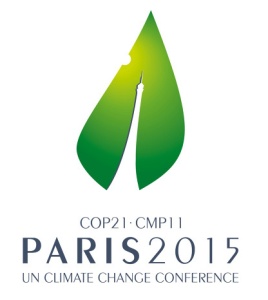The United Nations Paris Agreement of 2015 provides world countries with a framework on decreasing greenhouse gas (GHG) emissions and minimizing harmful effects of climate change. The goal of this historical document is to unite developed and developing countries in acting upon keeping the increase of global temperature below 2 °C from the pre-industrial level and adapting to the consequences of natural disasters. It has been decided that efforts of developing nations that lack resources can be financially supported by the developed countries. The destination of the agreement is clear, but how will the journey evolve?

Source: UNCCC Paris 2015
The Climate Change deal provides an opportunity to reshape the world as we know it if it will be implemented by the majority of countries. In the perfect scenario, drastic decrease of GHG emissions will lead to the natural “recharge” that will allow the planet to recover from constant deterioration. Improved air and water quality will allow for the improvement in public health and decrease in incidence of environmental diseases.
Successful adaptation of the Intended Nationally Determined Contributions (INDC) will reshape global economy due to the shifts in energy production from nonrenewable resources to the sustainable alternatives like solar and wind power. As a result, nations with limited natural supplies of oil, gas, and coal can become less dependent on imports and explore their own renewable resources. Thus, finances spared by using local energy alternatives could be possibly directed towards creating resilient and sustainable communities that can withstand and quickly recover from the rising number of natural disasters. Developing nations will have an opportunity to get on board with a major league and receive financial support for implementing environmental changes.
Philadelphia will be affected by the changing economy as any other urban center. The city is historically known not only as the cradle of the nation, but also as an industrial center with considerable GHG emissions in the later days. Nowadays the majority of factories are ceased to exist with an exception of oil refinery facilities. Tourism is yet another major source of city’s income. The implementation of Climate Change deal along with local initiatives on improving city living could cause a switch to the renewable energy sources, sustainable city planning, expansion of urban parks, adaptation of environmentally friendly tourism practices, and strict regulations on the emissions.
However, there are a few constrains that could impede implementation of the agreement. Resistance of the major industries that rely on nonrenewable energy sources, lack of national consensus on how to implement costly changes, and specifics of national politics are major drawbacks of the agreement. Clearly, planning to decrease GHG emissions in accordance with local situation has attracted a greater number of countries to participate in the climate deal, but lack of control over INDC implementations and vague agreement on financing developing countries could hinder the sustainable future.
Although Paris Agreement is imperfect and provides suggestions rather than strict guidelines on decreasing global GHG emissions, it unites 197 countries in a fight against climate change and gives incentives by accepting national baby steps in the right direction that will hopefully lead us to the greater future.
